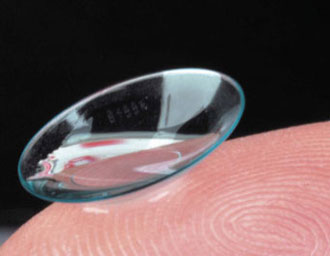extended wear contact lenses

Lower leg, posterior superficial view.
Extended wear contact lenses, which are generally made of flexible plastics, are contact lenses available for overnight or continuous wear ranging from one to six nights or up to 30 days. They are distinguished from other contacts by the fact that they allow oxygen to pass through to the cornea. Some rigid gas-permeable lenses are also designed and approved for overnight wear.
The length of continuous wear depends on the lens type and on your eye care professional's evaluation of your tolerance for overnight wear. The majority of extended wear lenses have been approved by the Federal Drug Administration (FDA) to be worn without removal for up to seven days. However, some lenses made from super-permeable silicone hydrogel are approved for up to 30 days of continuous wear. An additional advantage of silicon hydrogel is that it contains less water than traditional hydrogel. As a result, extended wear lenses are not as prone to dehydration while they're being worn.
Extended wear contact lenses first went on sale in the early 1980s but it soon became apparent that people who kept their contact lenses in over night tended to suffer more from eye infections. Consequently, many doctors began advising their patients to remove their contacts lenses while sleeping.
This situation has now changed thanks thanks to the introduction of disposable lenses. It use to be that you would wear your lenses for a week, take them out, clean them, and then re-use them. The cleansing process, however, could never be thorough enough to eliminate the risk of inflammation. Today, the health concerns stemming from extended wear have been dramatically reduced through the introduction of disposable extended wear lenses that can be used for seven days or more and then replaced with a fresh pair.
Despite these advances, you should always follow the advice of your eye-care professional with respect to contact lens replacement and care. Technical advances, while greatly reducing the risks of sleeping in contact lenses have not removed them altogether.


